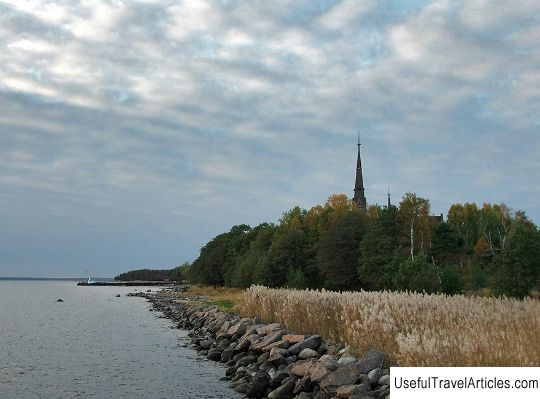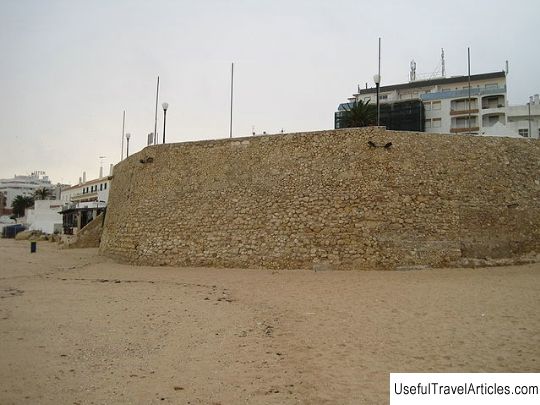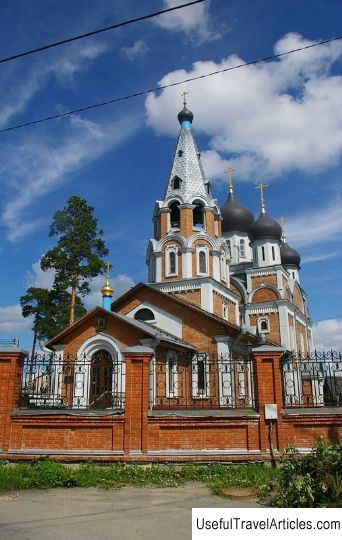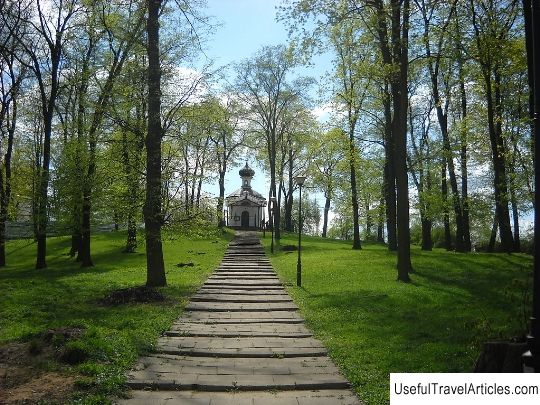Lutheran Church of St. Mary Magdalene in Primorsk description and photos - Russia - Leningrad region: Vyborgsky district
Rating: 7,9/10 (689 votes) 
Lutheran Church of St. Mary Magdalene in Primorsk description and photo - Russia - Leningrad region: Vyborgsky district. Detailed information about the attraction. Description, photos and a map showing the nearest significant objects. Photo and descriptionIn the city of Primorsk, Leningrad Region, there is a building of the Lutheran Church of St. Mary Magdalene, which was erected in the Northern Art Nouveau style by J. Stenbeck. The history of the church begins with the parish of Koivisto, where in the 14th century a small temple was erected on the island of Suokansaari. Later, the church was erected on the shore in the Katerlahti bay (Cape Kirkkoniemi (Light)). At the beginning of the 20th century in Koivisto there was a church cut from wood (the fifth in a row). Its building was very small, and everyone who wished could not attend the solemn services in the church. In 1911, that temple was transferred from Koivisto to Vyborg, where it received the name Talikkalankirkko. Josef Stenbeck began work on the project in 1900. Drawings and calculations were completed by 1901. Construction began in 1902. The building of the new church was designed for 1800 people. The opening of the church took place in December 1904. In 1905, Emperor Nicholas II visited these places and visited the new church, which was recorded in his personal diary. The tsar presented the parish with 22,500 marks. This money was used to build a 31-register organ. The central place in the church was given to a sculpture of a ship made in 1785, which the new parish inherited from the old one. The decoration of the church was a wall fresco painted by the wife of the architect Stenbeck Anna. Later, the arrival as a gift from the Swedish crown received gold utensils and dishes. In 1928, the stained glass painter Lennart Segerstrole complemented the decoration of the temple by making a beautiful stained glass window in one of the windows of the western facade. This stained glass window was the largest in area in Finland and was 46 sq. meters. On the southern facade of the temple, a stained glass window was installed by Lauri Valkke, dedicated to Saints Peter and Paul. Many details of the decoration were made by artists from the Helsinki company "Salomon Vuori". In the hall of the church there were carved oak benches, and ten crystal chandeliers illuminated it, 5 of which are now in Finland. The outer walls of the church are lined with local red granite, and the inner walls are finished with bricks. The roof is made of specially treated sheet metal. The building has the shape of a cross in plan. During the Russian-Finnish war of 1939-1940. the building of the church was not damaged. After Koivisto was taken by Soviet troops, a stable and a House of Culture were located in the building. During the Second World War, the church was seriously damaged - the roof was pierced by a shell that exploded inside the building. When the Finns captured Koivisto in the fall of 1941, the church was repaired. Three years later, in 1944, the Finns left the city and was re-occupied by Soviet troops. A hospital was located in the church, the evacuees were accommodated, later there was a sailors' club here. The carved oak benches were transported to the newly opened cinema (now the Alta store). Then the building of the church was closed. At the same time, the organ disappeared without a trace. In 1948, residents turned to the district administration with a request to transfer the church under the House of Culture. The request was granted. Repairs have begun in the church. The rubbish was removed, the central hall was divided into several rooms, the stained-glass windows were laid with bricks, the crosses were removed. In 1990 a bar and a disco were opened in the church building, then there was a shop. In 1996 a local history museum worked in the church. In 2004, the museum hosted a conference dedicated to the 100th anniversary of the temple, in which historians from Russia and Finland, Bishop of the Lutheran Church of Ingria A. Kugappi, took part. In 2006-2007, music festivals were held here. Currently, the church is badly dilapidated. Thanks to the donation of S. Mikhalchenko, a resident of Primorsk, the roof of the building was repaired and emergency beams were replaced. However, the church still needs major repairs. Several legends are associated with the church. Local residents believe that the organ was not taken out, but it was hidden in the woods nearby. The crosses on the church were gold (in reality they were oak).     We also recommend reading House ”Golden Dog” (Kamienica Pod Zlotym Psem) description and photos - Poland: Wroclaw Topic: Lutheran Church of St. Mary Magdalene in Primorsk description and photos - Russia - Leningrad region: Vyborgsky district. |




